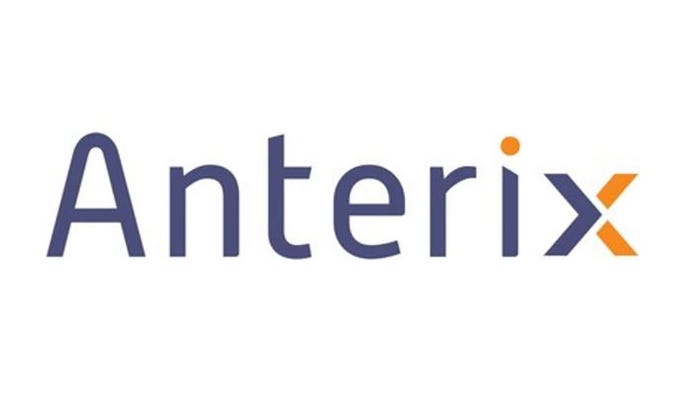Speed thrillsSpeed thrills
The newest Wi-Fi standard, 802.11n, boosts throughput to 600 Mb/s.
January 1, 2010

Wireless Internet access using IEEE 802.11-compliant devices is one of the great technology success stories of the 21st century. By leveraging free spectrum and a standards-based solution, the computer industry created untethered Internet access for the masses. Better known by its industry name, Wi-Fi, 802.11 has given the cell-phone industry a run for its money, and most smart phones incorporate both Wi-Fi and cellular data services in one device. The purpose of this article is to provide a brief refresher on Wi-Fi (see also the February 2007 issue of Mobile Radio Technology) and introduce the newest version of the standard: IEEE 802.11n, a major enhancement that raises the top bit rate from 54 Mb/s to 600 Mb/s.
A brief history of Wi-Fi
Like many successful technologies, Wi-Fi was spawned by a pioneer group of hobbyists and true believers. Before there was wireless Internet access, there was a barren wasteland of spectrum called the industrial, scientific and medical (ISM) bands. ISM equipment is not used for radio communications, but radio frequency emissions are a consequence of ISM equipment operation. Examples of ISM equipment are industrial heaters, radio frequency welders, diathermy machines and microwave ovens. Until the 1980s, the ISM bands were considered unacceptable for radio communication because of harmful interference created by ISM equipment.
However, several companies and small industry groups petitioned the FCC to open these bands for communications and these advocates showed that low-power radios using spread spectrum modulation could coexist with ISM radiators. In 1985, the FCC issued new rules for radio communication in the ISM bands in Part 15. These new rules authorized radios to operate license-free in the ISM bands at power levels up to 1 W, provided the radios use spread spectrum techniques. In addition to ISM and Part 15 radio users, the ISM bands were and are used by vehicle-tracking services, amateur radio operators, licensed point-to-point microwave, and U.S. Navy fire-control radars. Part 15 radios use the bands on a secondary basis to these other users.
One of the first communications uses of the ISM bands was wireless data networking, but these early networks predated widespread use of the Internet, and solutions were proprietary. In 1997, the Institute of Electrical and Electronics Engineers published its first wireless Ethernet standard, IEEE 802.11. This first standard was crude, even by 1997 technology standards, and much less sophisticated than cellular phones of the era.
Nevertheless, the telecommunications industry lives and dies by interoperability standards, and this first standard was the key to widespread adoption of Wi-Fi technology. Of course, it didn’t hurt that the Internet was taking off at the same time and laptop computers were starting to achieve decent market penetration. The genius of 802.11 is that, because it is wireless Ethernet, its operation is largely transparent to the user and software applications that work on the wireline network work the same on 802.11 networks.
Because of FCC rules in place at the time, the first 802.11 standard was required to use spread-spectrum modulation, which limited bit rates to 2 Mb/s in a 20 MHz-wide radio channel. Over time, the FCC relaxed the definition of spread spectrum and then abandoned the spread-spectrum requirement altogether, although a maximum power density (in watts per hertz) is still enforced for certain frequency bands.
Major revisions to the 802.11 standard were published in 1999 and 2003, when orthogonal frequency division multiplexing (OFDM) was introduced in the 5 GHz and 2.4 GHz bands, respectively. The peak data rate in each band was 54 Mb/s, and this rate remained the state of the art until September 2009, when the 802.11n amendment was published. IEEE 802.11n employs several sophisticated techniques to boost the peak bit rate to 600 Mb/s. These same techniques are used with slight variations in WiMAX and cellular 4G networks. Thus, Wi-Fi radios are now every bit as sophisticated as the most up-to-date smart phones.
Table 1a> summarizes the most important 802.11 revisions published to date. IEEE 802.11 amendments that have been ratified for at least six months can be downloaded for free from http://standards.ieee.org/getieee802/.
IEEE 802.11n incorporates all earlier amendments to 802.11, including the medium access control (MAC) layer enhancements in 802.11e for quality of service (QoS) and power savings. The 802.11n amendment applies to both the 2.4 and 5 GHz bands.
The design goal of the 802.11n amendment is high throughput, up to 600 Mb/s in raw bit rate. This boost in throughput is achieved through a variety of techniques, including more subcarriers; improved forward error correction; reduced guard interval; multiple in, multiple out (MIMO) technology, and 40 MHz-wide channels. Some of these enhancements boost throughput at the expense of range, while others improve range. Let’s examine each, in turn.

More subcarriers
802.11a/g has 48 OFDM data subcarriers. 802.11n increases this number to 52, thereby boosting throughput from 54 Mb/s to 58.5 Mb/s.
Improved forward error correction
IEEE 802.11a/g employs a forward error correction technique, called trellis coded modulation, which has code rates between ½ and ¾. 802.11n adds a 5/6 code rate, which boosts the raw bit rate from 58.5 Mb/s to 65 Mb/s. Another enhancement to the forward error correction scheme is the use of low density parity check, or LDPC codes, a class of codes that nearly achieve the Shannon channel capacity limit (see Equation 1). LDPC codes are not new. They were discovered by Robert Gallager in 1960, but no computer at the time could do the required calculations in real time and they only became practical recently. LDPC codes and turbo codes are the only codes in widespread use that achieve the Shannon limit.
Reduced guard interval
The guard interval is the time between transmissions. 802.11n has an option to reduce the guard interval from 800 ns to 400 ns, which raises the throughput from 65 Mb/s to 72.2 Mb/s.
MIMO
MIMO is a spatial multiplexing technique that employs multiple antennas at the transmitter and the receiver. In spatial multiplexing, a single high-bit-rate information stream is split into multiple lower-rate streams, and each stream is transmitted from a different transmit antenna, but at the same radio frequency. If these signals arrive at the receiver antenna array with sufficiently different spatial signatures due to multipath propagation, the receiver can separate each stream, creating parallel channels that increase throughput. However, it should be noted that while the maximum number of antennas specified in the 802.11n amendment is four, many off-the-shelf products have only two. MIMO exploits multipath reflections. If each reflection can be isolated through the use of separate antennas, a linear increase in throughput can result. In the best case, the throughput increases by a factor of four, from 72.2 Mb/s to 288.9 Mb/s.
40 MHz-wide channels
All previous versions of 802.11 have a channel bandwidth of 20 MHz, although some chip-set manufacturers support 5- and 10-MHz channels by scaling the OFDM sampling rate. 802.11n has an optional mode that uses a 40 MHz channel. While the channel bandwidth is doubled, the number of OFDM subcarriers is increased by slightly more than a factor of two, from 52 to 108. This yields a total channel throughput of 150 Mb/s and, combining four channels with MIMO, we get 600 Mb/s.
We should emphasize that the 600 Mb/s rate is the peak rate and only is available over short ranges when the multipath environment is favorable and 40 MHz of spectrum is available.
802.11n also employs reduced MAC layer overhead, transmit antenna beamforming, space-time coding and a faster rate-changing algorithm to automatically pick the best rate for the conditions. Beamforming, space-time coding and MIMO are interrelated.
Jay Jacobsmeyer is president of Pericle Communications Co., a consulting engineering firm located in Colorado Springs, Colo. He holds bachelor’s and master’s degrees in electrical engineering from Virginia Tech and Cornell University, respectively, and has more than 25 years experience as a radio-frequency engineer.
Related Stories
Table 1: Partial List of IEEE 802.11 Amendments
Standard | Description |
|---|---|
802.11-1997 | Original standard, frequency hopping and direct sequence spread spectrum (DSSS) |
802.11a-1999 | OFDM up to 54 Mb/s in 5 GHz band, 20 MHz channel |
802.11b-1999 | DSSS up to 11 Mb/s in 2.4 GHz band, 20 MHz channel |
802.11g-2003 | OFDM up to 54 Mb/s in 2.4 GHz band, 20 MHz channel |
802.11i-2004 | Security, including encryption and key management |
802.11j-2004 | OFDM up to 54 Mb/s in 4.9 GHz band, 10 and 20 MHz channels (Japan) |
802.11s | Mesh networking (still in committee) |
802.11n-2009 | Improved coding, MIMO, reduced overhead, up to 600 Mb/s |



